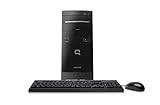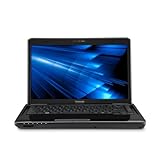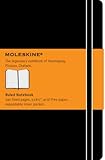
What's wrong? Is it my processor or graphic card? I have Nvidia Geforce 8400gs and Intel Centrino dual core
Video Rating: 0 / 5
Laptop or notebook computer technology , Reviews Guide that looks into what a notebook with the Intel Centrino Duo badge really means in terms of its features

What's wrong? Is it my processor or graphic card? I have Nvidia Geforce 8400gs and Intel Centrino dual core
Video Rating: 0 / 5

Rating:  (out of reviews)
(out of reviews)
List Price: $ 329.99 Price: $ 329.99 Original :: Compaq Presario CQ5600F Desktop PC - Black

Read here !! www.amazon.com HP Pavilion dv4-2173nr 14.1-Inch Laptop - Black Overview of the HP Pavilion dv4-1145go. This laptop is pretty fast for just a standard laptop with no outstanding specs. The laptop has a Intel Centrino dual core CPU rated at 2.00GHz on both cores. It has 4.00GB of 400MHz DDR2 RAM. The graphics are an Intel Media Accelerator 4500m. With 1700MB shared graphics memory.
Video Rating: 0 / 5

Those trade show guys always too crazy trying to outdo each other with cool stuff, but this is just nuts.
Video Rating: 4 / 5
Rating:  (out of reviews)
(out of reviews)
List Price: $ 5.95 Price: $ 5.95 Original :: Centrino adds juice to mobile PCs. (Agency Tchnology on the Cutting Edge).: An article from: National Underwriter Property & Casualty-Risk & Benefits Management

Rating:  (out of 40 reviews)
(out of 40 reviews)
List Price: $ 360.50 Price: $ 339.99 Original :: ASUS Eee PC 1015PED-PU17-BK 10.1-Inch Netbook (Black)

free-laptop-toshiba.blogspot.com Powerfully styled and equally packed with powerful computing resources and video processing, the Toshiba Qosmio X305-Q711 is engineered to deliver unparalleled performance to gamers and multimedia enthusiasts. Featuring Toshiba's trademark "fiery" Fusion finish with Rogue design, it pairs one of the latest Intel Centrino 2 processors with Nvidia GeForce 9700M GTS graphics featuring NVIDIA SLi technology, 512 MB of discrete graphics and up to 2303 MB of shared memory when using the included 64-bit version of the Windows Vista Home Premium operating system.
Video Rating: 0 / 5
The DIR-665 is powered by the latest wireless technology 802.11n. The router includes 4-port Gigabit Switch you can use for connecting the computers with Gigabit NIC adapter enabled using UTP Cat5e standards. Highpeed wired connection is ideal for high-intensive bandwidth applications such as multiplayer gaming, large file transfer and video applications. Selectable Dual-Band and HD Fuel Technology Unlike its competitor TEW691 wireless 450Mbps gigabit router which uses single 2.4 GHz frequency band, DIR-665 D-Link Xtreme N450 is powered by dual-band (2.4 GHz and 5 GHz) you can select. The drawback with the selectable dual-band over simultaneous dual-band is that you cannot work with multiple wireless devices which operate in mixed frequency bands (both 2.4 and 5 GHz) in a time. But with single 5 GHz band in a time, the router provides much clearer band and less interference. For gaming experiences and HD video streaming, you can select the 5 GHz radio band for cleaner band and less interference (from other wireless devices which operated in 2.4 GHz band). And with the additions of superior HD Fuel and Intelligent QoS Prioritization technologies, make your gaming and HD media streaming more enjoyable. You can provide prioritization for time-sensitive online traffic, such as smooth streaming videos, responsive gaming, and smooth VoIP calls with this Intelligent QoS technology. Advanced Network Security DIR-665 D-Link Xtreme N450 router supports the dual firewall feature (Network address translation and Stateful packet inspection) to help prevent any types of internet threats such as hackers. And to allow traveler users create secure tunneling to your network, the router supports VPN Pass-through / Multi-sessions PPTP / L2TP / IPSec. For wireless connection security, the DIR-665 supports the latest industrial wireless security WPA/WPA2 to helps protect the un-authorized access. Green Technology DIR-665 D-Link Xtreme N450 is an eco-friendly router which is designed to help conserve energy, protect our environment from harmful substances, and reduce waste by using recyclable packaging and other green technology features including: 1. Ports with no links will be down automatically. This will save the power. 2. Each different Ethernet cable lengths consume different power output. Traditionally the system supply the same power to different cable length 3. Energy star compliant Original :: DIR665 Xtreme N450 a High Performance Router for Smooth Gaming and Video

Rating:  (out of 90 reviews)
(out of 90 reviews)
List Price: $ 679.99 Price: $ 499.99 Original :: Toshiba Satellite L645D-S4036 LED TruBrite 14-Inch Laptop (Black)
Original :: How to Buy the Best Netbook For 2010

Rating:  (out of 21 reviews)
(out of 21 reviews)
List Price: $ 299.99 Price: $ 289.65 Original :: Toshiba Mini NB255-N245 10.1-Inch Black Onyx Netbook (8 Hour Battery Life)





Toshiba announces highest capacity notebook HDD: 750 GB
Toshiba announces highest capacity notebook HDD: 750 GB Toshiba announced the world's highest capacity 2.5...
Original :: Toshiba announces NB205 netbook mini
If the friends reached the battery standby time than the "official battery standard", then we can still be extended by a number of ways:
1,25 ? ~ 40 ? using a standard external environment, the use of lithium-ion batteries can reach the best condition, if the temperature is too high, not only the laptop itself runs slow or even crash, and the battery in such an environment is also under will affect its efficiency. So as far as possible under the indoor environment using a laptop.
Original :: you can save a lot of battery powey After disabling the use of results have been
Original :: Which Notebook Computer Has Your Name On It

The Notebook's Rachel McAdams and Ryan Gosling Win for Best Kiss in The Notebook
Video Rating: 4 / 5
Original :: Breaking the Computer Buying Cycle

If you havent heard of Miley Cyrus, well, Im wondering how that could be possible... Miley has grown up before our eyes as Hannah Montana, but in this film you will discover why she has become such a phenomenon. You have only just begun to see what this young star has to offer. Her performance as confused and rebellious teen Ronnie is mature and shows enormous depth. A key theme of The Last Song is music, a great fit for Miley and her new song When I Look At You. Here for viewing is the music video featuring clips from the film and Mileys co-star Liam Hemsworth. Based on best-selling novelist Nicholas Sparks (A Walk to Remember, The Notebook) latest novel, The Last Song is set in a small Southern beach town where an estranged father (Greg Kinnear) gets a chance to spend the summer with his reluctant teenage daughter (Miley Cyrus), whod rather be home in New York. He tries to reconnect with her through the only thing they have in commonโ��musicโ��in a story of family, friendship, secrets and salvation, along with first loves and second chances. The film is directed by Julie Anne Robinson from a screenplay by Nicholas Sparks & Jeff Van Wie. Available on DVD & Blu-ray August 4 Classification: PG - Mild Themes, violence and coarse language
Video Rating: 4 / 5

Rating:  (out of 46 reviews)
(out of 46 reviews)
List Price: $ 17.95 Price: $ 10.17 Original :: Moleskine Ruled Notebook Large
Original :: Some Essential Information About On the web Game titles
Original :: How to Buy the Best Netbook For 2010